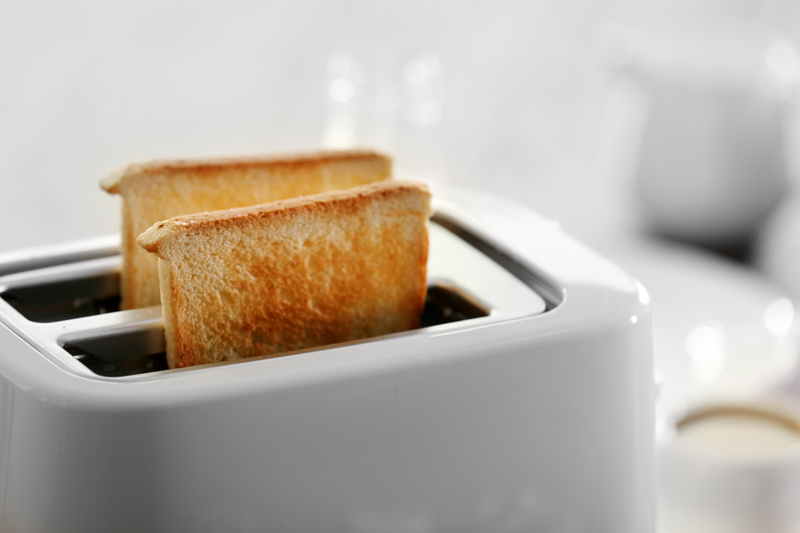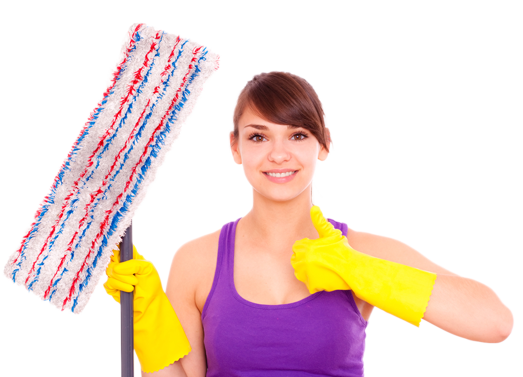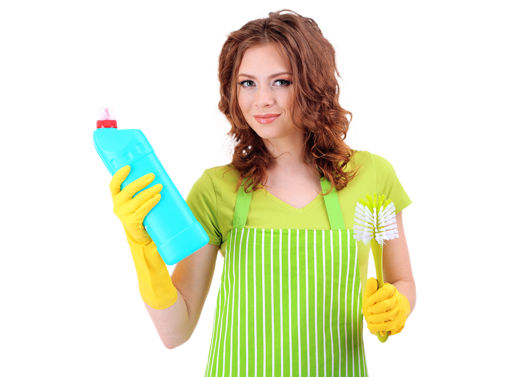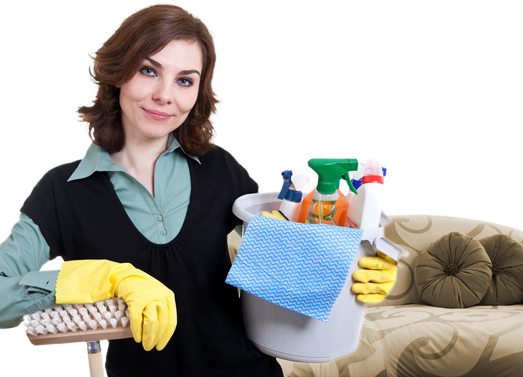Top Strategies for Effective Carpet and Floor Cleaning
Posted on 05/10/2025
Top Strategies for Effective Carpet and Floor Cleaning
Keeping your carpets and floors immaculate isn't just about aesthetics--it's essential for a healthy, comfortable home. Dirt, stains, allergens, and bacteria can easily accumulate on floors and carpets, impacting both the appearance and indoor air quality of your living space. Whether you're a homeowner or business owner, implementing the right carpet and floor cleaning methods can prolong the life of your flooring and create a cleaner environment for everyone. In this comprehensive guide, we explore the top strategies for effective carpet and floor cleaning to help you achieve spotless results with less effort.
Why Effective Carpet and Floor Cleaning Matters
Carpets and floors are some of the most heavily trafficked areas in any setting. Over time, dust, spills, and grime can degrade their appearance and harbor potentially harmful allergens or bacteria. Maintaining clean flooring offers several key benefits:
- Prolongs the lifespan of your carpets and floors
- Improves indoor air quality
- Creates a more visually appealing space
- Reduces allergens and contaminants
- Enhances the value of your property
With these benefits in mind, let's explore the best carpet and floor cleaning strategies to keep your space looking and feeling its best.

Top Strategies for Cleaning Carpets
Effective carpet cleaning requires more than just vacuuming once in a while. Deep cleaning techniques, spot treatments, and regular maintenance all play crucial roles in preserving your carpet's beauty and longevity.
1. Develop a Consistent Vacuuming Routine
Vacuuming is the first line of defense against dirt and dust buildup. For optimal results:
- Vacuum high-traffic areas at least twice a week
- Use a vacuum with a HEPA filter to trap small particles and allergens
- Go slowly over each section to ensure thorough cleaning
- Don't forget corners and under furniture
Regular vacuuming prevents grit and debris from settling deep into the carpet fibers, minimizing wear over time and keeping your floors looking and feeling fresh.
2. Tackle Stains Immediately
Act fast when spills happen! Blot liquids using a clean, white cloth--never rub, as this can spread the stain and damage fibers. For solid messes, gently lift with a spatula or spoon before treating the spot.
For homemade solutions, mix a small amount of dish soap with warm water to blot most stains. For tougher messes, use a commercial carpet stain remover or consult professional help for specialty stains like wine or pet accidents.
3. Regular Deep Cleaning
Deep cleaning your carpet extends its life and removes embedded dirt, dust mites, and bacteria that regular vacuuming can't reach. Popular methods include:
- Steam cleaning (hot water extraction): This highly effective method uses hot water and cleaning agents to loosen dirt, then vacuums it away.
- Dry cleaning: Uses minimal moisture and specialized compounds to absorb dirt from carpet fibers, ideal for delicate or moisture-sensitive carpets.
It's recommended to deep clean carpets every 12-18 months or more often in homes with kids, pets, or allergies. You can hire a professional or rent a carpet cleaning machine for DIY jobs.
4. Prevent Dirt from Entering
Prevention is a key aspect of effective carpet cleaning. Use doormats at all entrances and encourage guests to remove their shoes before entering. Area rugs in high-traffic zones can also catch dirt and protect your carpet.
5. Professional Carpet Cleaning Services
Sometimes, nothing beats professional expertise. Certified carpet cleaners utilize high-powered equipment and industry-grade solutions to achieve deeper results than standard household machines. Consider professional carpet and floor cleaning at least once a year for heavy-use spaces or as part of your spring-cleaning routine.
Best Practices for Hard Floor Cleaning
Hard surfaces such as hardwood, tile, laminate, or vinyl have their own unique maintenance needs. Different flooring types require specialized cleaning strategies to maintain their durability and appearance.
1. Know Your Floor Type
The first step to effective hard floor cleaning is understanding your flooring material. Wood, tile, stone, and vinyl each have unique care requirements. Always check manufacturer guidelines before using a new cleaner or tool to avoid accidental damage.
2. Sweep or Vacuum Regularly
Dirt and grit can scratch and dull hard floors. Sweep or vacuum at least several times a week, especially in high-traffic areas. Use a vacuum with a hard floor setting or a microfiber dust mop to prevent scratches.
3. Use the Right Cleaning Solution
Choose cleaners matched to your floor type:
- Hardwood floors: Use a pH-neutral wood cleaner or a few drops of mild soap in water. Avoid excess moisture, as standing water can warp wood.
- Tile and stone: Non-acidic tile cleaners are best. For grout lines, a baking soda paste works well for removing stains.
- Laminate and vinyl: Use gentle, non-abrasive cleansers and avoid oversaturation.
4. Don't Over Wet Your Floors
Too much water is the enemy of many hard floor types, particularly wood and laminate. Use a damp--not soaking--mop and dry floors promptly to prevent water damage or residue.
5. Protect Your Floors
- Use felt pads on furniture legs to prevent scratches
- Place rugs or runners in entryways and busy areas
- Clean spills immediately to prevent staining or warping
Pro Tips for Both Carpet and Floor Cleaning
Regardless of your flooring type, these universal tips can further boost your floor and carpet cleaning results:
- Rotate Furniture: This prevents permanent carpet indentations and uneven wear on hard flooring.
- Maintain Indoor Air Quality: Use air purifiers and ensure adequate ventilation--especially during and after cleaning--for faster drying and reduced allergy risk.
- Schedule Regular Maintenance: Don't wait until your carpet or floors look dirty; schedule cleaning as part of your monthly or seasonal routine.
- Invest In Quality Tools: Superior cleaning equipment and solutions often provide better results, with less effort and fewer chemicals.
- Follow Manufacturer's Instructions: Always adhere to care laundry tags and product recommendations to keep warranties intact and prevent damage.
Eco-Friendly Carpet and Floor Cleaning Tips
Eco-friendly cleaning is more popular than ever, with many homeowners and businesses looking to reduce chemical use and protect the environment. Here are a few ways to ensure greener carpet and floor cleaning:
- Choose biodegradable or plant-based cleaners
- Limit water use by opting for concentrated products
- Sweep and vacuum thoroughly before wet cleaning to reduce the need for stronger chemicals
- Reuse washable pads or microfiber cloths instead of disposable wipes
Baking soda and vinegar are excellent, cost-effective natural solutions for many cleaning needs (just avoid vinegar on natural stone and some sealed floors, as it can etch surfaces).
Common Mistakes to Avoid
Even with the best intentions, common carpet and floor cleaning mistakes can hinder results or even damage your floors:
- Overusing cleaning products - This can leave sticky residues that attract more dirt.
- Skipping pre-vacuuming - Cleaning without removing debris first can grind dirt in deeper.
- Using the wrong products - Always match your cleaner to your carpet or floor type.
- Allowing water to pool - Excess moisture damages wood and laminate and can foster mold/mildew in carpeting.
- Ignoring manufacturer care guidelines - This can void warranties and lead to costly repairs.
Latest Trends in Carpet and Floor Cleaning
The carpet and floor cleaning industry continues to evolve, offering new tech and eco-friendly solutions:
- Robotic vacuum cleaners: Programmed to clean daily, these devices help maintain floors with minimal effort.
- Green certifications: Look for carpets and cleaning products certified by organizations like Green Seal or GREENGUARD.
- Low-moisture cleaning systems: Help reduce water and drying times, especially for commercial spaces.
- Antimicrobial treatments: Modern carpets and floors often include built-in treatments to resist bacteria and mold.

Choosing the Right Carpet and Floor Cleaning Professionals
If you decide to invest in professional floor and carpet cleaning, choose certified, experienced providers. Ask about their cleaning methods, products, guarantees, and customer reviews to ensure your investment delivers the best health and appearance benefits.
Final Thoughts: Achieving Cleaner, Healthier Floors and Carpets
Consistent, proactive carpet and floor cleaning is the foundation for a beautiful, healthy home or workplace. From daily maintenance to annual deep cleaning, using these strategies ensures your floors last longer and offer a welcoming environment all year round.
By understanding the specific needs of your floors and carpets, employing the right techniques, and investing in quality products or professional services, you can keep your entire space sparkling. Remember--clean floors are more than just attractive; they're an essential part of your quality of life and well-being.
For more cleaning tips and expert advice on maintaining carpets and floors, explore our related guides below or contact local professionals to schedule a deep cleaning consultation tailored to your needs.




